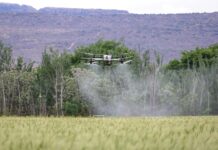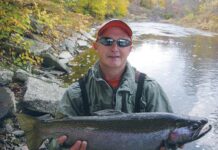In and around our area of the state this spring, pasture and forage systems have been slow to grow, despite recent precipitation events.
This slow wake-up call is most likely a result of the intense drought conditions experienced in the past year and ongoing unpredictable weather patterns. Drought conditions impact pasture and forage systems by reducing soil moisture, in turn affecting productivity.
Unpredictable changes in precipitation and temperature adversely affect plant growth both above and below ground, making it easier for undesirable species to establish themselves. Weedy plants thrive in these conditions and quickly fill in gaps where forage stands are less vigorous and dense.
Weeds negatively impact both the quality and longevity of desirable forage plants. They often compete with desirable species for light, water and nutrients. Additionally, weeds can create palatability issues for grazing livestock, with some potential toxicities.
However, certain weedy plants are not detrimental to pastures or hayfields and do provide a valuable nutritional component to the needs of grazing livestock. This dichotomy frequently facilitates the need for farmers to develop an adaptive, integrated approach when selecting and implementing strategies for effective weed management in these unique environments.
Where to start
One of the easiest ways to manage weed situations in any environment is to proactively scout your fields. Familiarizing yourself with weedy plant identification techniques supports proper identification and matching the best control options to the current situation. Scouting to identify forage species as well as undesirable or toxic weeds, knowing their lifecycle (biennial, perennial, annual) and staging forage growth in your system are all simple tools that can be implemented at relatively low cost, but are often overlooked due to time constraints.
However, when practiced in combination, these simple tools can be the first step in creating and maintaining a successful weed management plan for your grazing system.
Management
Pasture management is a key contributor to the effective control of weedy plants in grazing systems. Practices that contribute to overgrazing, such as too high a stocking rate or allowing animals to graze on newly seeded pastures as well as low fertility levels favor weedy plant establishment and should be discontinued or at minimum decreased. Farmers should evaluate and select management techniques that support the vigorous growth and establishment of desirable forage species. Successful pasture management includes practices that: maintain proper soil pH and fertility levels, implement controlled grazing strategies, match timely mechanical control methods (mowing) with proper stage of maturity, allow new seedings to become well-established before use and renovate as needed.
Herbicides
Herbicide applications can also be an effective tool for weed management in the grazing system. A reminder that when using any pesticide product, always read and follow the label instructions. Consideration should be given to the type and kind of forage and weed species present, the stage and severity of weed populations, the end use of the forage, time of year, environmental conditions (temperature and precipitation), potential damage to surrounding sensitive or preferred plantings, the return/removal interval post application to graze or harvest forage and cost.
One of the most important considerations for using herbicides in forage grazing situations is the length of the re-entry, return to or removal from grazing post-application period for livestock. The University of Kentucky Extension Factsheet AGR-172-Weed Management in Grass Pastures, Hayfields and other Farmstead Sites is a great reference for farmers in the overall implementation of a weed management plan. This fact sheet provides a reference table that outlines those waiting periods post-herbicide application before grazing livestock, harvesting hay or removing animals for slaughter. It highlights common herbicides used in grazing systems for weed management as well as the time interval in days for the type of animal grazing, removal from the system pre-harvest and the harvest of the forage for hay. You can find it at https://tinyurl.com/dpsxmxd9.
A general practice is to remove animals for 7-14 days from the treated area after application. This allows for potentially toxic plants to decompose.
Treating mixed pastures
Another frequent challenge includes the treatment of weeds as part of a mixed pasture or hayfield where grass and clover or other forage legumes grow together. In this case, where a selective herbicide option is not available as a broadcast treatment, the limitation is the potential for one or more of the desirable forage species to experience significant injury or be killed by the application. The lack of established residue levels by the Environmental Protection Agency for some forage species is also an important factor.
Recognizing and understanding the impact of weeds in your grazing system is a critical component in your system’s ability to support the livestock grazing it. Choosing an integrated approach that includes observational, biological, cultural, mechanical and chemical options provides you with multiple tools to manage weedy plants in a way that best supports your operation with minimal cost.













